
You want to reduce knitwear costs while maintaining good quality. Many companies face challenges such as poor fabric, limited budgets, and strict regulations. To save money, you should seek value in every step of the process.
Here is a quick look at knitwear costs and carbon emissions in different places:
Region | Cost per Metre (USD) | Carbon Emissions (kg CO₂ eq./kg) |
|---|---|---|
Bangladesh | 0.70 | Less than 4 |
Italy | 1.54 | More than 12.5 |
Vietnam | 1.19 (yarn) | Not available |
Brazil | Not available | Less than 4 |
Uzbekistan | Not available | Moderate |
Reducing knitwear costs means making smart choices. You can spend less and still produce high-quality knitwear.
Key Takeaways
Check different suppliers to get good prices and quality. Good relationships can help you get better discounts later.
Buying a lot at once can save you 5-15% on materials. This also helps you avoid paying more when there are shortages.
Pick yarns that cost less but last long and fit your needs. Always try out samples before you buy a lot.
Use lean manufacturing to cut waste and work faster. This can make production much cheaper.
Check your knitwear often during every step of making it. Finding problems early keeps quality high and saves money.
Reduce Knitwear Costs
Supplier Comparison
You can lower knitwear costs by checking different suppliers first. Suppliers have different prices and quality. Some give discounts. Comparing helps you find the best deal for your money. Some suppliers offer extra help like design or checking quality. These extras can save you money. Good supply chain management means looking at price and services. You should also look for hidden costs like shipping fees. Checking suppliers often helps you find better deals and new discounts. If you build strong relationships, you may get more discounts and better deals over time.
Bulk Purchasing
Buying in bulk is a great way to save money on knitwear. When you buy more, you usually get bulk discounts. These discounts can lower your total cost a lot. Many brands save 5-15% or more by signing bulk contracts instead of buying small amounts. For example, a brand that buys 10,000 yards of fabric each year can save $12,000-$18,000. Bulk discounts also help you avoid big price jumps when there are shortages. You keep your production on track and save money.
Benefit | Details |
|---|---|
Bulk discounts | Save 5-15% or more on material costs |
Annual savings | $12,000-$18,000 saved on 10,000 yards per year |
Price stability | Avoid 25-35% price hikes during shortages |
Reliable supply | Maintain production schedules and avoid costly delays |
Negotiation Tactics
You can save even more by using smart negotiation tactics. First, learn about all the costs, not just the price. Value extra services like quality control from your supplier. Set a price range that works for both sides. Talking openly builds trust and helps you get better discounts. Show you are serious by ordering often or signing longer contracts. Suppliers often give loyal customers extra discounts and better payment plans. Good supply chain management means working together for the best results.
Tip: Always ask about discounts and bulk deals before you finish any sourcing deal. This easy step can help you save money and make your costs lower.
Material Sourcing on a Budget

Budget Yarns Selection
You can make smart choices with budget yarns and still keep your knitwear high quality. When you pick yarn for your budget, focus on three things:
Durability: Choose yarn that can handle many washes and wears.
Fiber Content: Acrylic or blended yarns often cost less and last longer.
Intended Use: Think about how often people will use the item.
You should always check the yarn’s fiber content for strength. Yarn with a tight twist or several plies gives you more durability. If you want to keep your knitwear on a budget, test samples first. Feel the yarn and see if it meets your standards. This step helps you avoid low-quality yarn that could raise your cost later.
Tip: Ask your supplier for samples of budget yarns before you buy in bulk. This way, you can check the quality and make sure it fits your needs.
Fabric Utilization
You can save a lot by using fabric wisely. When you plan your cuts and patterns, you waste less yarn. Good fabric utilization means you use almost every bit of yarn you buy. This step can give you 10-20% savings on your total cost. Try better cutting techniques and plan your patterns to fit together. This method boosts cost efficiency and helps you get more from your budget yarns.
Less waste means lower cost.
Smart planning leads to better cost efficiency.
You get more knitwear from the same amount of yarn.
Standardized Trims
Using the same trims across different styles is a smart move for budget-friendly knitwear. When you standardize trims, you can order more at once. This step lowers your minimum order quantities (MOQs) and makes sourcing easier. You also save on cost because you do not need to buy many types of trims. Standardized trims help you keep your knitwear line simple and your cost under control. This is a key part of strategic material sourcing.
Note: Building good relationships with suppliers helps you get better deals on trims and yarn. Strategic material sourcing means you always look for ways to save cost without losing quality.
Production Efficiency
Lean Manufacturing
Lean manufacturing helps you make clothes faster and cheaper. These methods cut waste and save money. You should try these ideas:
Use machines to do jobs quicker.
Add systems to watch how work is going.
Use lean steps in every part of making clothes.
Teach your team so they learn new skills.
You can also do these things to save more money:
Make sure materials move smoothly.
Cut down time between jobs.
Use smart ways to work.
Take out steps that do not help.
Make workflows better for good results.
These steps help you work faster and spend less money.
Reduce CPM
Lowering cost per minute (CPM) helps you save money. When CPM goes down, you make more profit. Look at this table to see how it works:
Metric | Formula | Example | Conclusion |
|---|---|---|---|
CPM | Total Operational Cost ÷ Total Minutes | ||
EPM | (FOB × Line Efficiency) ÷ SMV | ($8.00 × 70%) ÷ 12 = $0.0467/min | EPM < CPM, not viable |
Profitability | If EPM > CPM → Profitable; If EPM < CPM → Unsustainable |
Always check these numbers when making clothes. This helps you keep costs low and your business strong.
Minimize Waste
Cutting waste helps you save money when making clothes. Try these ideas:
Work with suppliers to get just enough materials.
Teach staff to use materials the right way.
Use machines to cut fabric more exactly.
Training and better ways of working help a lot. See how these steps help in this table:
Strategy | Impact on Value Enhancement |
|---|---|
Makes work faster and fewer mistakes | |
Streamline Production Processes | Less waiting and less waste |
Regular Maintenance | Makes everything work better and last longer |
On-the-job Training | Staff work faster and make better products |
Inline Quality Checks | Finds problems early and saves time |
Doing these things helps you spend less and work better. This way, you control costs and make clothes more efficiently.
Knitting on a Budget
Costing Methods
When you focus on knitting on a budget, you need to understand every part of your cost. You can break down your knitwear production expenses into clear components. This helps you see where your money goes and where you can save. Here is a simple table to guide you:
Component | Description |
|---|---|
Raw Materials | The cost of yarn and other materials you use. |
Labor | The money you pay your workers for knitting. |
Overhead Costs | Bills like rent, electricity, and office expenses. |
CMT Cost | The cost for cutting, making, and trimming each garment. |
Freight | Shipping costs for moving materials and finished products. |
Profit | The extra amount you add to cover your business growth. |
You should also look at details like garment net weight, yarn price, knitting time, trims, and accessories. Each factor changes your total cost. The type of yarn, fabric weight, and dye all affect your budget. Machines and finishing steps can also raise or lower your cost. By tracking these details, you improve cost efficiency and avoid surprises. Always review your numbers before you set prices. This keeps your budget on track and helps you reach your profit goals.
Tip: Use a checklist for each order to make sure you include every cost. This habit helps you avoid missing hidden expenses and keeps your budget strong.
Labor Management
Managing your team well is key to keeping your budget under control. When you use lean manufacturing, you cut out wasted time and steps. This makes your workers more productive and lowers your labor cost per item. You can double your output by teaching your team new skills and using smart scheduling. Training helps your staff make fewer mistakes, which saves you money and keeps quality high.
Schedule workers based on production needs.
Offer training to boost skills and reduce errors.
Use clear goals to track progress and improve cost efficiency.
AI-powered quality checks can spot mistakes early. This keeps your products at a high standard and reduces returns. When you manage labor well, you protect your budget and keep your cost low. You also build a team that works smarter, not harder.
Remember: Good labor management is not just about saving money. It also helps you deliver better knitwear and grow your business.
Order and Sales Optimization
Order Consolidation
You can save money by combining small orders into one big order. Fewer shipments mean you pay less for shipping and handling. This helps you spend less and work more efficiently. Suppliers often give better prices for bigger orders. You also save time because you have fewer invoices and deliveries to manage. If you plan orders during busy sales times, you can buy more when prices are low. This helps you avoid paying extra for last-minute orders. Order consolidation keeps your production steady and your costs low.
Shipping Savings
Shipping can cost a lot of money. You can save by picking the best way to ship your products. Transportation models help you choose good routes and the right amount for each shipment. When you use partial loading, you fill trucks or containers as much as you can. This cuts down on empty space and lowers shipping costs. You can also save by putting factories and warehouses closer to your customers. This makes shipping faster and cheaper. Some companies plan production and shipping together. This matches what you make with how you ship, which saves money and keeps sales strong.
Transportation models help you find cheaper shipping routes.
Partial loading means less empty space and lower costs.
Putting factories in smart places saves on shipping and running costs.
Planning production and shipping together helps meet customer needs and saves money.
Sales Forecasting
Good sales forecasting helps you plan orders and control inventory. When you look at past sales, you see busy and slow times. This helps you order the right amount of knitwear. You do not end up with too much or too little stock. Good forecasting means you order just what you need, which saves money and keeps customers happy. Advanced forecasting also helps you avoid supply chain problems. You can stop big changes in orders and keep sales steady. Managing inventory well helps your business grow and protects your profits.
Tip: Use sales forecasting tools to watch trends and change your orders. This helps you avoid extra costs and keeps your knitwear business strong.
Batch Planning & MOQ Strategy
Batch Size Optimization
You can make each item cost less by planning batch sizes well. When you put similar designs together, you save time on machine setup and color changes. This helps you spend less on fabric, trims, and labor. You also pay less for things like rent and electricity when you plan batches better. Your work moves faster and you do not have to wait as much.
Putting similar designs together saves time and cuts color changes.
Making your work steps the same helps you find and fix slow spots.
Bigger batches mean you spread costs over more items, so each one costs less.
If you hold workshops to improve, you can find new ways to work better. This keeps your costs down and helps you finish orders faster.
MOQ Negotiation Techniques
Talking with suppliers about lower minimum order quantities (MOQs) can help you save money and avoid too much extra stock. You can try different ways to do this:
Talk often with your supplier to build trust.
Offer to pay a bit more for a small order to show you are serious.
Ask for a test order to prove people want your product.
Mix styles or colors in one order to meet the MOQ.
See if you can buy leftover or cancelled items in small amounts.
Tell your supplier you are new and want to start with a small order.
These ideas help you get just what you need without spending too much. You stay flexible and keep your costs low.
Inventory Management Alignment
Making batch planning work with inventory management helps you not have too much or too little stock. You should plan your stock by looking at sales and marketing plans. Using smart tools can help you see changes in the market early. This way, you only keep the stock you need and waste less.
Making items only when needed keeps extra stock low.
JIT inventory means you do not store too much and save money.
Watch what customers want and how long things take to arrive so you do not run out.
Here are some real-life ways batch planning and MOQ management save money:
Strategy | Description | Cost Savings Impact |
|---|---|---|
Understanding MOQ Price Breaks | Plan orders to hit MOQs and get better prices | Lower costs and better cash flow |
Bundling Styles or Colors | Put styles or colors together in one order | Less waste and fewer unwanted items |
Pre-Selling via Mockups | Use digital samples to check demand before big orders | Less risk of having too much stock |
You can use these tips to keep costs down and your business running well.
Logistics Optimization
air vs sea
You have two choices for shipping knitwear. Air freight is fast. It takes 1 to 7 days. Sea freight is slower. It takes 20 to 45 days. Air shipping arrives on time more often. Sea shipping costs much less money. For example, sending 500 kg by sea from Shanghai to Los Angeles costs under $2,000. Sending the same by air costs over $8,000. Air freight costs 12 to 16 times more than sea freight. If sea shipping is $100, air shipping could be $1,200 to $1,600. Use air shipping only if it is less than 15% to 20% of your item’s value.
Sea freight is good for big shipments and saving money.
Air freight is best for rush orders or expensive items.
Free patterns for shipping schedules help you plan well.
You can use free online calculators to check cost and delivery time. These tools help you pick the best way for your business. Free patterns for logistics planning show how changes affect your cost.
Tips for FBA or door-to-door delivery
You can save money with smart delivery choices. Fulfillment by Amazon (FBA) and door-to-door delivery give free patterns for shipping. Check if FBA or Fulfillment by Merchant (FBM) saves you more money. Shipping straight to many fulfillment centers cuts transport fees. Watch FBA fees to keep your cost low.
Best Practice | Description |
|---|---|
Optimize Inventory Management | Use Amazon’s free patterns to refill stock and avoid extra fees. |
Utilize Local Delivery Hubs | Use free local hubs to lower last-mile delivery cost and work faster. |
Offer Multiple Delivery Options | Give free choices to customers so they order more and pay less. |
Leverage Technology | Use free route tools to save fuel and deliver faster. |
You can use free packaging ideas to lower distribution fees. One seller used mixed box packing and Amazon’s free in-stock program. They saved $7.47 for each unit and made 98.1% more money. Free patterns for delivery planning help you spend less and work better.
Tip: Always search for free resources and free patterns to plan your shipping. These free tools help you control cost and make more profit.
Quality Assurance

Regular Inspections
You should check your knitwear at every step. This helps keep quality high and costs low. Regular checks let you find problems early. You can fix them before they get worse or cost more. Use a simple plan to check each step. This plan makes sure your work meets your standards. It also helps you waste less and save money. Here is what you check at each stage:
Stage of Production | Purpose of Inspection |
|---|---|
Yarn Selection | Makes sure raw materials are good quality |
Production Control | Finds mistakes and keeps work the same each time |
Final Inspection | Checks all quality and rules before shipping |
Shipment Control | Looks for errors in labels, packaging, and paperwork |
Check the yarn before you start making anything. This stops bad materials from costing you more later. During production, you can spot mistakes quickly. Final checks make sure your knitwear follows all rules and what customers want. Checking shipments helps you avoid returns that cost a lot. Regular checks help you save money by stopping problems early.
Feedback Loops
Feedback loops help you make better knitwear and save money. A feedback loop means you get info from every part of your work. You use this info to fix problems fast and keep costs down. Here is how feedback loops help:
Always getting feedback lets you fix dropped stitches or yarn issues right away.
Better quality control means fewer bad products and less returns.
A good feedback system uses ideas from your team, stores, and customers. You learn what works and what needs to change. This helps you make better products and avoid extra costs. Using feedback well helps you save money and keep your knitwear business strong.
Tip: Always listen to your team and customers. Fixing problems fast keeps costs low and quality high.
You can lower knitwear cost and keep quality high by using these smart strategies. When you focus on cost efficiency, you improve your business in many ways:
Lower cost helps you offer better prices and attract more buyers.
Good cost efficiency lets you use resources well and grow your profits.
Eco-friendly steps cut cost and show your brand cares about the planet.
You should check your cost often and adjust your plan. Use digital tools to track cost and reduce waste. Try new ways to manage cost, like energy-saving machines. When you control cost, you keep your knitwear strong and your business ready for the future.
Start with the tips that fit your business best. Review your cost plan often to keep cost low and quality high.
FAQ
What is the best way to lower knitwear cost without losing quality?
You should compare suppliers and check all material options. Focus on smart sourcing and watch every step. This helps you keep cost low. You can also use feedback from your team to spot problems early. This keeps your knitwear strong and your cost under control.
How does cost efficiency help my knitwear business?
Cost efficiency means you get the most value for every dollar you spend. You use less material and time for each item. This helps you lower cost and increase profit. You can grow your business faster when you focus on cost efficiency.
Why should I track every cost in knitwear production?
Tracking every cost helps you see where your money goes. You can find waste and fix it. You avoid surprise bills. This makes your business stronger. You can plan better and keep your cost low. Good tracking leads to better cost control.
Can I improve cost efficiency with small changes?
Yes, you can. Small steps like better training, smarter batch planning, and using less material all help. You can check your process often. Each small change adds up. This keeps your cost low and improves cost efficiency for your knitwear.








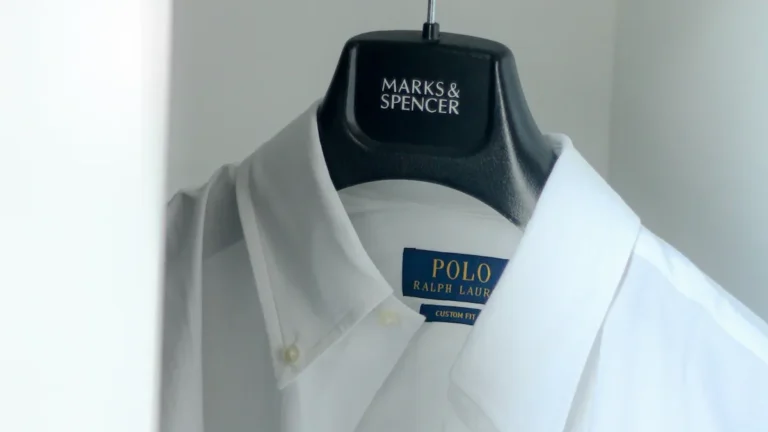

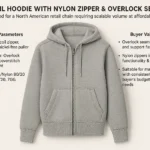
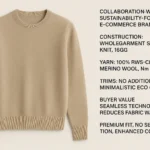



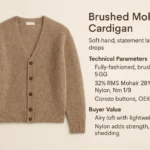
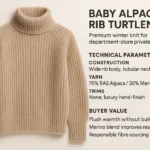
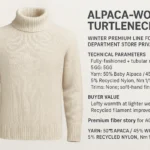
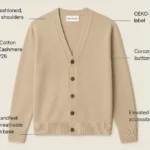
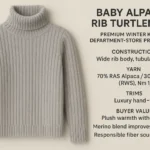
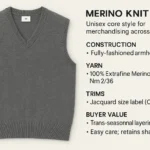
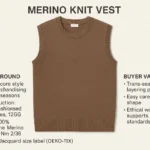
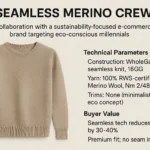

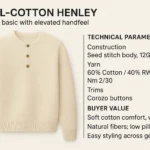
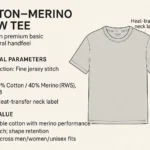
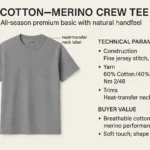

1 thought on “10 Smart Ways to Cut Knitwear Expenses and Keep Quality High”
Pingback: How to Find Reliable OEM Factories for Wholesale Knitwear